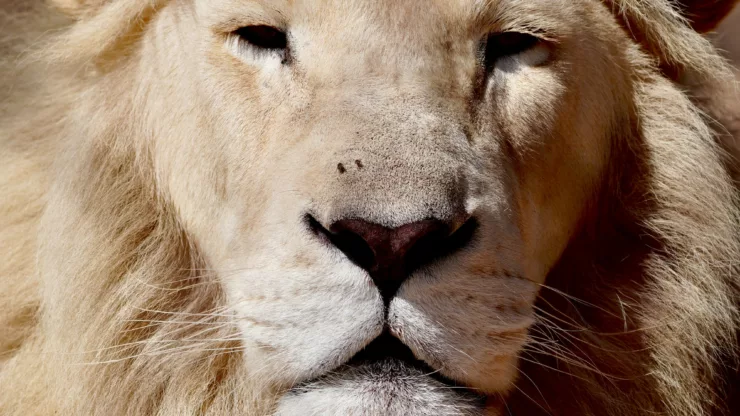Jump to Section
The Importance of Urban Wildlife Rehabilitation
As cities continue to expand and encroach on natural habitats, the need for urban wildlife rehabilitation becomes increasingly critical.
The purpose of wildlife rehabilitation is to rescue, rehabilitate, and release injured, orphaned, or sick animals back into the wild.
While wildlife rehabilitation is often associated with rural or wilderness areas, it is also an essential aspect of urban environments.
Urban wildlife rehabilitation centers provide a crucial lifeline for animals that have been affected by urbanization.
These centers help to maintain healthy ecosystems and preserve biodiversity in urban areas.
In this article, we will explore the advantages and disadvantages of urban wildlife rehabilitation and provide a balanced view of this critical aspect of urban wildlife management.
Advantages: How Wildlife Rehabilitation Benefits Urban Environments
Urban wildlife rehabilitation offers several benefits to urban environments, including:
-
Preserving Biodiversity: Wildlife rehabilitation helps to preserve the natural balance of ecosystems by ensuring that injured or sick animals are returned to their natural habitats.
This helps to maintain the biodiversity of urban environments.
-
Promoting Conservation: By rehabilitating wildlife, urban wildlife rehabilitation centers promote conservation and raise awareness about the importance of protecting wildlife habitats.
-
Enhancing Public Education: Urban wildlife rehabilitation centers often provide educational programs for the public, which can help to raise awareness about the importance of wildlife conservation.
-
Promoting Animal Welfare: Wildlife rehabilitation centers provide medical care and rehabilitation for injured or sick animals, which promotes animal welfare and helps to reduce animal suffering.
Disadvantages: The Challenges of Urban Wildlife Rehabilitation
While urban wildlife rehabilitation offers many benefits, it also faces several challenges, including:
-
Limited Resources: Urban wildlife rehabilitation centers often face resource constraints, including limited funding, staff, and facilities.
-
Public Safety Concerns: Rehabilitated animals may pose a safety risk to the public if they are released back into urban environments.
-
Disease Transmission: Wildlife rehabilitation centers may inadvertently spread diseases among animals, particularly if they are overcrowded or lack proper sanitation.
-
Human Interaction: Wildlife rehabilitation centers may inadvertently habituate animals to human interaction, which can be detrimental to their survival in the wild.
Balancing the Scales: A Fair Assessment of Urban Wildlife Rehabilitation
Urban wildlife rehabilitation is a critical aspect of urban wildlife management, but it also faces several challenges.
To ensure that wildlife rehabilitation centers can continue to provide essential services, it is crucial to balance the advantages and disadvantages of urban wildlife rehabilitation carefully.
This can be achieved by:
-
Ensuring Adequate Resources: Wildlife rehabilitation centers require adequate funding, staff, and facilities to provide quality care for animals.
-
Conducting Risk Assessments: Wildlife rehabilitation centers should conduct risk assessments to ensure that rehabilitated animals do not pose a safety risk to the public.
-
Implementing Disease Control Measures: Wildlife rehabilitation centers should implement proper sanitation measures to prevent the spread of diseases among animals.
-
Minimizing Human Interaction: Wildlife rehabilitation centers should minimize human interaction with rehabilitated animals to ensure that they can survive in the wild.
By balancing the advantages and disadvantages of urban wildlife rehabilitation, we can ensure that wildlife rehabilitation centers continue to provide essential services to injured or sick animals and help to preserve the biodiversity of urban environments.
FAQ
What animals are commonly rehabilitated in urban environments?
Urban wildlife rehabilitation centers commonly rehabilitate animals such as birds, raccoons, skunks, squirrels, opossums, and rabbits.
How long does it take to rehabilitate an animal?
The length of time it takes to rehabilitate an animal depends on the species, the severity of the injury or illness, and the availability of resources.
Some animals may require only a few days of care, while others may require several weeks or months.
Can rehabilitated animals survive in the wild?
Rehabilitated animals can survive in the wild if they are healthy and released into suitable habitats.
However, some animals may not survive if they have been habituated to human interaction or if their injuries or illnesses have left them unable to fend for themselves.
How can the public support urban wildlife rehabilitation?
The public can support urban wildlife rehabilitation by volunteering at wildlife rehabilitation centers, donating funds or supplies, and promoting awareness about the importance of wildlife conservation.
I’m a nature enthusiast and creator of Metro Wilds and have spent years exploring the great outdoors.
With a passion for environmental conservation and sustainability, I have dedicated my career to writing about the beauty and wonders of nature, as well as the threats facing our planet.
Contact me at [email protected] for assistance.





